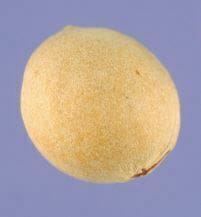If you love exploring unique flavours in the kitchen, then Mahleb is a spice you should definitely know about. With its distinctive taste, Mahleb adds depth and warmth to baked goods and dishes from the Middle East, the Mediterranean, and beyond. Let’s dive into what makes Mahleb such a special and versatile spice.
What Is Mahleb?
Mahleb is the ground seed of the cherry-like fruit of the Prunus mahaleb tree, which is native to the Mediterranean region. The tree’s small, dark seeds have a rich, complex flavour that’s a combination of almond, cherry, and a subtle hint of spice. The seeds are usually ground into a fine powder, which is then used to flavour both sweet and savoury dishes.
A Rich History
Mahleb has been used for centuries in various culinary traditions. In the Middle East and parts of the Mediterranean, it’s a beloved ingredient in baking, especially for pastries and bread. It’s especially common in traditional Greek, Turkish, and Arab desserts. Historically, it was also prized for its medicinal properties, believed to help with digestion and provide a natural energy boost.
How Does Mahleb Taste?
Mahleb’s flavour is truly unique. It has a warm, slightly bitter taste, with hints of almonds, cherries, and even a touch of vanilla. It’s not as sweet as some other spices, but it has an aromatic depth that makes it perfect for balancing richer flavours in baked goods. When you use Mahleb, it imparts a fragrant, almost floral note that’s both comforting and complex.
Culinary Uses of Mahleb
While Mahleb is not as widely known as cinnamon or nutmeg, it’s a star ingredient in many traditional recipes. Here’s how you can use Mahleb in your cooking:
- Baked Goods: Mahleb is most commonly used in baking, particularly in breads, cakes, and pastries. It pairs wonderfully with yeasted doughs, giving them a light, fragrant flavour. Mahleb is often used in Greek tsoureki (a sweet Easter bread) and Turkish simit (sesame-crusted bread).
- Pastries: Mahleb is frequently added to Middle Eastern pastries, such as knafeh, baklava, and ma’amoul (date-filled cookies), where it enhances the flavour without overwhelming it.
- Cookies and Biscuits: Try adding Mahleb to cookie dough for an exotic twist. It works especially well with shortbread or almond-flavoured cookies.
- Breads: Use Mahleb in sweet or enriched bread recipes, like challah or brioche, to infuse them with its aromatic flavour.
- Savory Dishes: While Mahleb is most famous in sweet baked goods, it can also be used in savory applications. It adds depth to stews, rice dishes, or even as a spice in marinades for meats.
Health Benefits of Mahleb
Besides its culinary uses, Mahleb also has some medicinal properties. It has been used in traditional medicine for its potential health benefits:
- Digestive Aid: Mahleb is thought to help with digestion and is sometimes used to treat upset stomachs.
- Anti-inflammatory: The seeds contain compounds that may help reduce inflammation in the body.
- Antioxidants: Mahleb contains antioxidants, which help to protect the body from harmful free radicals and support overall health.
How to Use Mahleb in Cooking
- Ground Mahleb: Most commonly, Mahleb is sold as a finely ground powder, which makes it easy to incorporate into doughs, batters, and spice mixes.
- Use in Small Amounts: Mahleb has a strong flavour, so a little goes a long way. Start with a small pinch and adjust according to taste.
- Pair with Other Spices: Mahleb works well in combination with cinnamon, nutmeg, cardamom, and vanilla, which are often used in traditional recipes alongside it.
Fun Fact: Mahleb in Greek Easter Bread
In Greece, Mahleb is a key ingredient in tsoureki, a sweet, aromatic bread traditionally made for Easter. This bread, infused with the subtle notes of Mahleb, is often braided and topped with a red-dyed egg, symbolizing the resurrection. It’s a beloved part of Greek Easter celebrations, with the sweet, fragrant aroma of Mahleb filling homes across the country.
Conclusion
Mahleb is a spice that may be lesser known but certainly not lesser loved. Its complex, almond-cherry flavour adds a distinct touch to both sweet and savoury dishes, particularly baked goods. Whether you’re making traditional Middle Eastern pastries or experimenting with new recipes, Mahleb is sure to elevate your culinary creations.
Have you ever used Mahleb in your cooking? Share your favourite recipes or ways to use this fragrant spice in the comments below!

